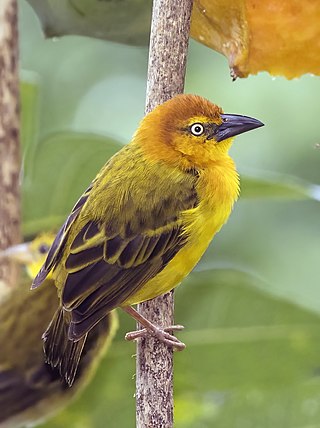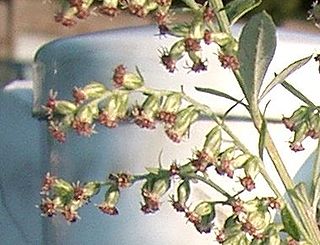
Tiberius Julius Caesar Augustus was Roman emperor from AD 14 until 37. He succeeded his stepfather Augustus, the first Roman emperor. Tiberius was born in Rome in 42 BC to Roman politician Tiberius Claudius Nero and his wife, Livia Drusilla. In 38 BC, Tiberius' mother divorced his father and married Augustus. Following the untimely deaths of Augustus' two grandsons and adopted heirs, Gaius and Lucius Caesar, Tiberius was designated Augustus' successor. Prior to this, Tiberius had proved himself an able diplomat, and one of the most successful Roman generals: his conquests of Pannonia, Dalmatia, Raetia, and (temporarily) parts of Germania laid the foundations for the empire's northern frontier.
Princeps is a Latin word meaning "first in time or order; the first, foremost, chief, the most eminent, distinguished, or noble; the first person". As a title, princeps originated in the Roman Republic wherein the leading member of the Senate was designated princeps senatus. It is primarily associated with the Roman emperors as an unofficial title first adopted by Augustus in 23 BC. Its use in this context continued until the regime of Diocletian at the end of the third century. He preferred the title of dominus, meaning "lord" or "master". As a result, the Roman Empire from Augustus to Diocletian is termed the "principate" (principatus). Other historians define the reign of Augustus to Severus Alexander as the Principate, and the period afterwards as the "Autocracy".

The princeps senatus, in English the leader of the senate, was the first member by precedence on the membership rolls of the Roman Senate. Although officially out of the cursus honorum and possessing no imperium, this office conferred prestige on the senator holding it.

In the Roman army during classical antiquity, a centurion, was a commander, nominally of a century, a military unit originally consisting of 100 legionaries. The size of the century changed over time, and from the first century BC through most of the imperial era was reduced to 80 men.

The Principate was the form of imperial government of the Roman Empire from the beginning of the reign of Augustus in 27 BC to the end of the Crisis of the Third Century in AD 284, after which it evolved into the Dominate. The principate was characterised by the reign of a single emperor (princeps) and an effort on the part of the early emperors, at least, to preserve the illusion of the formal continuance, in some aspects, of the Roman Republic.

The great lanternshark is a shark of the family Etmopteridae found in the northeast and northwest Atlantic. Its name was given because, at the time of its discovery, it was thought to be bioluminescent, but this has been challenged.

The Samborides or House of Sobiesław were a ruling dynasty in the historic region of Pomerelia. They were first documented about 1155 as governors (princeps) in the Eastern Pomeranian lands serving the royal Piast dynasty of Poland, and from 1227 ruled as autonomous princes until 1294, at which time the dynasty died out. The subsequent war for succession between the Polish Piast dynasty, the Imperial Margraviate of Brandenburg and the State of the Teutonic Order resulted in the Teutonic takeover of Gdańsk (Danzig) in 1308.

The scaly-breasted kingfisher or regent kingfisher is a species of bird in the family Alcedinidae endemic to central and southwestern Sulawesi in Indonesia. Its natural habitat is subtropical or tropical, moist, montane forests.

The Príncipe weaver is a species of bird in the family Ploceidae. It is endemic to São Tomé and Príncipe, where it is found on the island of Príncipe. It was described by Charles Lucien Bonaparte in 1851. Its natural habitat is subtropical or tropical moist lowland forests.

The western jumping mouse, is a species of rodent in the family Zapodidae. It is found in Canada and the United States.

Artemisia princeps, also commonly called yomogi, Japanese mugwort, Korean wormwood, Korean mugwort or wormwood in English, is an Asian plant species in the sunflower family, native to China, Japan and Korea. It is a perennial, very vigorous plant that grows to 1.2 meters. This species spreads rapidly by means of underground stolons and can become invasive. It bears small, buff-colored flowers from July to November which are hermaphroditic, and pollinated by wind. The leaves are feather shaped, scalloped and light green, with white dense fuzz on the underside.

Prinsep Ghat is a ghat built in 1841 during the British Raj, along the Kolkata bank of the Hooghly River in India. The Palladian porch in the memory of the eminent Anglo-Indian scholar and antiquary James Prinsep was designed by W. Fitzgerald and constructed in 1843.
Acanthocinus elegans is a species of longhorn beetles of the subfamily Lamiinae. It was described by Ludwig Ganglbauer in 1884, and is endemic to Iran. The beetles live approximately one year, and inhabit deciduous trees.
Acanthocinus henschi is a species of longhorn beetles of the subfamily Lamiinae. It was described by Reitter in 1900, and is known from Austria, Croatia, Italy, and Macedonia. The beetles measure 7-11 millimetres in length, and live for approximately 1–2 years. They inhabit trees in the species Pinus nigra.
Acanthocinus leechi is a species of longhorn beetles of the subfamily Lamiinae. It was described by Lawrence S. Dillon in 1956.

Acanthocinus nodosus is a species of longhorn beetles of the subfamily Lamiinae. It was described by Johan Christian Fabricius in 1775.

Acanthocinus obliquus is a species of longhorn beetle of the subfamily Lamiinae. It was described by John Lawrence LeConte in 1862.

Acanthocinus pusillus is a species of longhorn beetles of the subfamily Lamiinae. It was described by William Kirby in 1837.

Acanthocinus spectabilis is a species of longhorn beetles of the subfamily Lamiinae. It was described by John Lawrence LeConte in 1854.

Amanita princeps, the head man slender Caesar, is a species of agaric fungus in the genus Amanita. It is found in tropical China, Southeast Asia, and the Malay Peninsula down to Singapore. It is edible, and is collected in the wild and sold in local markets. Many incidents of mushroom poisoning have occurred among Laotian and Hmong immigrants to North America, since it is easily confused with Amanita phalloides, the death cap, in both appearance and odor.















